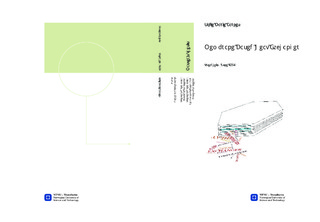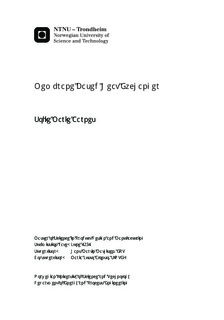| dc.contributor.advisor | Mathisen, Hans Martin | nb_NO |
| dc.contributor.advisor | Justo Alonso, Maria | nb_NO |
| dc.contributor.author | Aarnes, Sofie Marie | nb_NO |
| dc.date.accessioned | 2014-12-19T11:48:52Z | |
| dc.date.available | 2014-12-19T11:48:52Z | |
| dc.date.created | 2012-11-08 | nb_NO |
| dc.date.issued | 2012 | nb_NO |
| dc.identifier | 566164 | nb_NO |
| dc.identifier | ntnudaim:7916 | nb_NO |
| dc.identifier.uri | http://hdl.handle.net/11250/234784 | |
| dc.description.abstract | Reduction of the energy used to acclimatise buildings is a huge challenge simultaneously with the implementation of air tight low energy buildings. In residential buildings with several living units centralised air handling units are the most energy efficient system. However, in a centralised system there is important to avoid leakages of pollutions between the exhaust air and the supply air. This leads to that flat plate heat exchangers are used instead of the more energy efficient rotary heat exchanger in these types of buildings. Flat plate heat exchangers will have problems concerning water condensation and frost formation in the exhaust air channels at low supply inlet temperatures. In this thesis a membrane based heat exchanger, which also was able to transfer moisture, was compared to a plastic based heat exchanger to see if the membrane based exchanger had less problems concerning condensation and freezing. In addition a mathematical method was derived to predict the heat and moisture transfer effectiveness in a membrane based heat exchanger.To compare the different heat exchanger plate materials a test rig was built in the laboratory at the Department of Energy and Process Engineering at NTNU. The experiments showed that the plastic based heat exchangers had problems with condensation and freezing in the tested conditions. The membrane based exchanger did not experience the same problems. However, additional problems with expansion of the membrane in high humidity showed that the tested membrane had drawbacks and was not really suitable.The derived mathematical method to predict the moisture transfer effectiveness was shown to correlate very well with the experimental results. The derived method and the developed Microsoft Excel tool called HXcalc may then be used to investigate other membranes moisture transfer effectiveness. | nb_NO |
| dc.language | eng | nb_NO |
| dc.publisher | Institutt for energi- og prosessteknikk | nb_NO |
| dc.subject | ntnudaim:7916 | no_NO |
| dc.subject | MTPROD produktutvikling og produksjon | no_NO |
| dc.subject | Energi-, prosess- og strømningsteknikk | no_NO |
| dc.title | Membrane Based Heat Exchanger | nb_NO |
| dc.type | Master thesis | nb_NO |
| dc.source.pagenumber | 140 | nb_NO |
| dc.contributor.department | Norges teknisk-naturvitenskapelige universitet, Fakultet for ingeniørvitenskap og teknologi, Institutt for energi- og prosessteknikk | nb_NO |

